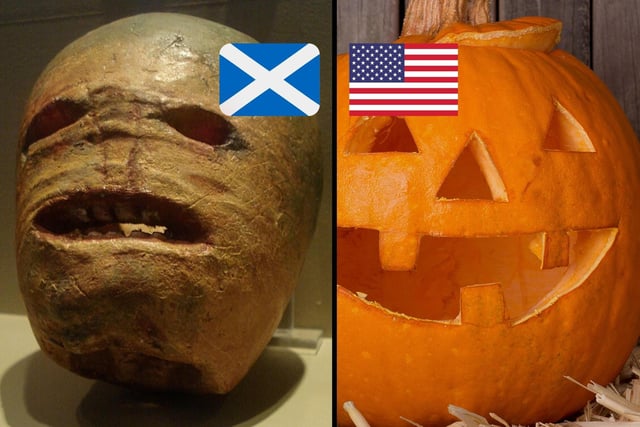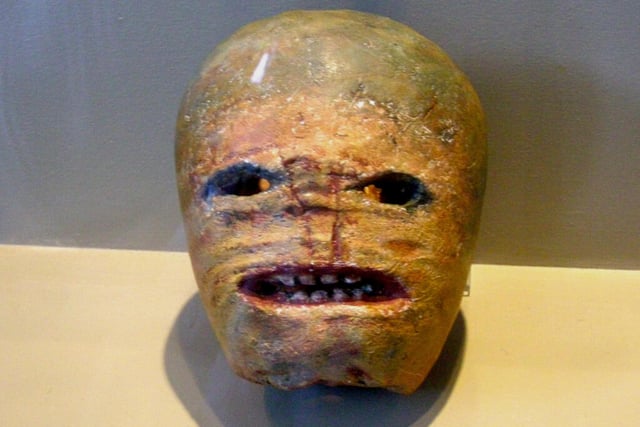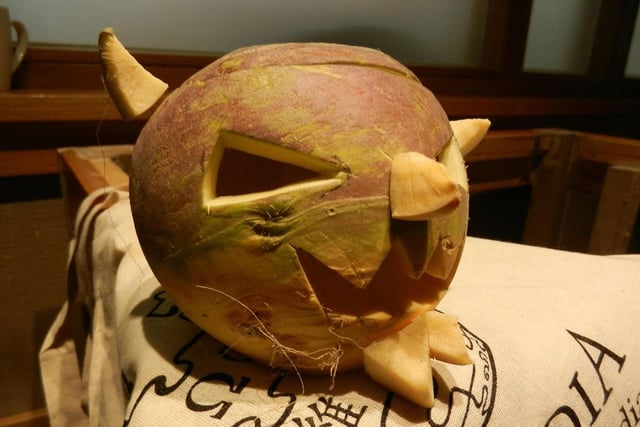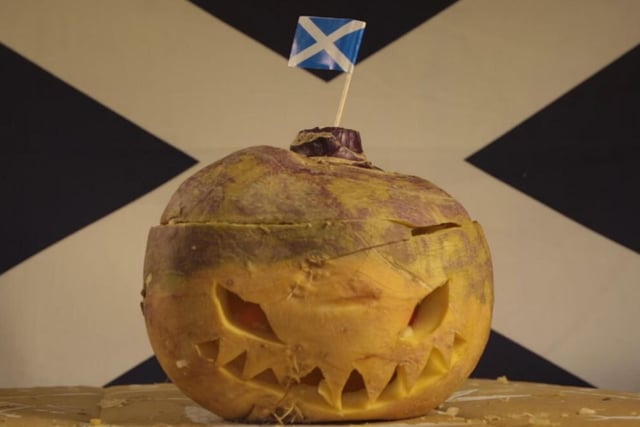While pumpkins are large, round, easy-to-carve and aesthetically pleasing with their bright orange colour, turnips are splotchy, unevenly coloured and rock-hard vegetables that are quite skull-like in their shape. Halloween in Scotland used to be about carving turnips but due to a heavy dose of U.S. culture here it is far more likely you will see pumpkins in your neighbourhood instead.
Regardless, much like how it said that a meal tastes better if you worked for it, a well-carved turnip feels more rewarding than your average pumpkin since it takes some heavy labour (be prepared to bend a spoon or two) but the creepy appearance afterwards is perfect for Halloween.
To see what we mean, here are ten pictures to show how turnips are creepier (and more traditional) than pumpkins.

1. Turnips Vs. Pumpkins
Jack-O-Lanterns are based on the legend of a wandering spirit known as "Stingy Jack", the ancient Celts would carve turnips to resemble his face but this tradition was later adapted to pumpkins after immigrants from places like Ireland and Scotland moved to the United States in the 1800s. Photo: chas53 via Canva Pro /rannṗáirtí anaiṫnid via Wikimedia Commons

2. Traditional Jack-O-Lantern turnip
This is a carved turnip on display at the Museum of Country Life in Ireland, it is a historical example of how locals would carve turnips to resemble scary faces during Halloween. Photo: IrishFireside via Flickr

3. Samhuinn carved turnip
Samhuinn describes the ancient Celtic festival that took place to mark the end of summer and the onset of the cold, dark winter. At this time it was thought that the veil between our world and the spirits' thinned, and therefore people carved masks like the turnip above so they could blend in with evil spirits and not be targeted by them. Photo: Stinglehammer via Wikimedia Commons

4. Scottish turnips
Traditionally in Scotland, scary or grotesque faces were carved into "neeps" (the Scots word for turnips) to create lanterns that would scare off ghosts or other demonic presences. Photo: Submitted
